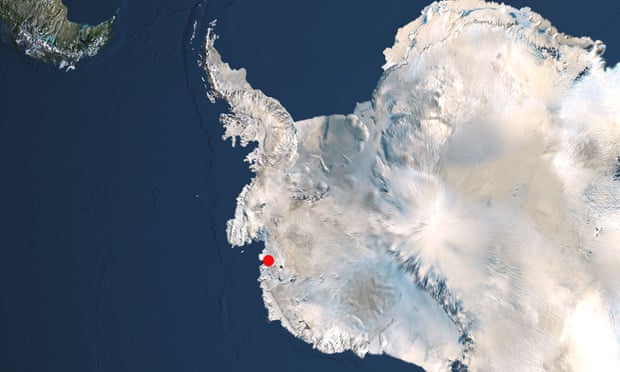Cracks and fissures stoke fears of breakup that could lead to half-metre rise in global sea levels – or more
Twenty years ago, an area of ice thought to weigh almost 500bn tonnes dramatically broke off the Antarctic continent and shattered into thousands of icebergs into the Weddell Sea.
The 1,255-sq-mile (3,250-sq-km) Larsen B ice shelf was known to be melting fast but no one had predicted that it would take just one month for the 200-metre-thick behemoth to completely disintegrate.
Glaciologists were shocked as much by the speed as by the scale of the collapse. “This is staggering. It’s just broken apart. It fell over like a wall and has broken as if into hundreds of thousands of bricks”, said one.
This week, ice scientists meeting in New Orleans warned that something even more alarming was brewing on the West Antarctic ice sheet – a vast basin of ice on the Antarctic peninsula. Years of research by teams of British and American researchers showed that great cracks and fissures had opened up both on top of and underneath the Thwaites glacier, one of the biggest in the world, and it was feared that parts of it, too, may fracture and collapse possibly within five years or less.
Thwaites makes Larsen B look like an icicle. It is roughly 100 times larger, about the size of Britain, and contains enough water on its own to raise sea levels worldwide by more than half a metre. It contributes about 4% of annual global sea level rise and has been called the most important glacier in the world, even the “doomsday” glacier. Satellite studies show it is melting far faster than it did in the 1990s.
Whether and how quickly they may collapse are some of the most important questions of the age. Sea levels are rising fast: the annual rate of increase more than doubling from 1.4mm to 3.6mm between 2006 and 2015, and accelerating. A few millimetres a year does not sound much but the loss of even a small part of Thwaites would not just help to speed this up further but would likely increase the severity of storm surges.
Should all West Antarctica’s glaciers ever collapse, there is no coastal city in the world that would not, over time, be swamped at ruinous cost to life and economies.
The consensus of glaciologists used to be that it would take centuries of global heating before glaciers the size of Thwaites shattered and collapsed, but so rapid and unexpected has been the loss of sea ice at the opposite end of the earth in the Arctic, and so sudden was the loss of Larsen B that it is now considered possible it could happen rapidly in Antarctica, too.
Ice loss in the Arctic barely affects sea levels because it mostly forms at sea. Antarctic ice, however, is mostly on land so any melting adds to sea levels.
The tipping point for the Larsen B ice shelf came suddenly. How Thwaites and other glaciers respond to global heating is still not known but these big global physical processes are under way and can be addressed only by global action.
Yet just one month after Cop26 ended in Glasgow, the warning that the 300-metre thick, 50-mile wide Thwaites glacier has started to crack up has been met with silence from governments preoccupied by Covid-19 and the return of normal politics. The danger is that the many actions pledged in November to address global heating will be shelved for another year, to become just one more risk in an increasingly dangerous world.
Thwaites underlines that global heating and glaciers do not wait for politicians, and every year action to reduce climate emissions is delayed only accelerates global disaster.
By John Vidal
The Guardian































